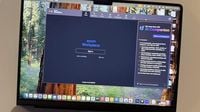On Wednesday, April 16, 2025, the popular video conferencing platform Zoom experienced a significant outage that left thousands of users across the United States unable to access its services. The disruption, which began in the early afternoon, was marked by a surge of reports on Down Detector, with numbers peaking at over 67,000 as users encountered an "Error 50003" message while trying to use the website and mobile application.
Zoom's status page acknowledged the issue, stating, "We continue to investigate the domain name resolution issues on the zoom.us domain that is affecting multiple services. More updates to follow." This statement indicated that the outage stemmed from difficulties in connecting the Zoom desktop application to its servers, a problem that can arise from various technical complications, including network connectivity issues, firewall restrictions, and server-side problems.
The outage had immediate ramifications for millions of remote and hybrid workers who rely on Zoom for daily meetings. The situation was particularly dire for businesses and educational institutions, where Zoom serves as a critical communication tool. Many users reported being unable to start or join video conferences, while administrators struggled to access the management dashboard on the web portal.
As the outage unfolded, the impact was felt across multiple sectors. The Zoom Meetings service experienced partial disruptions, preventing users from initiating or joining meetings. Additionally, Zoom Phone and Zoom Contact Center faced degraded performance, complicating communication for businesses that depend on these services. This combination of failures highlighted the platform's reliance on a centralized infrastructure, which, while cost-efficient, exposes it to significant risks during outages.
In the wake of this incident, Zoom users were left scrambling for alternatives. Many companies quickly turned to other videoconferencing solutions such as Microsoft Teams, Google Meet, and Cisco Webex to maintain their operations. However, transitioning to these platforms was not always seamless, especially for organizations that had heavily integrated Zoom into their workflows.
For instance, a marketing consultant based in São Paulo reported canceling three client meetings due to the outage, which delayed project deliveries. Similarly, an online language school in Rio de Janeiro had to suspend virtual classes, leading to dissatisfaction among students and teachers. On social media, users expressed their frustration with Zoom's initial lack of clarity regarding the outage's severity, sharing screenshots of error messages and joking about the unexpected break from work.
The outage also reignited discussions about the importance of having contingency plans for critical digital tools. With an estimated 300 million daily active users, any disruption to Zoom's services can have far-reaching consequences. This incident served as a reminder of the vulnerabilities associated with relying on a single platform for communication.
As Zoom worked to resolve the issues, it provided regular updates on its status page. By 5:01 PM Brasília time, the company confirmed that the outage affected multiple services, including Zoom Meetings, Zoom Phone, Zoom Contact Center, and the web portal. However, the absence of a clear timeline for resolution frustrated users, many of whom continued to report issues throughout the afternoon.
In the hours following the initial reports, Zoom's technical teams began investigating the root cause of the outage. Early indications pointed to domain name resolution issues with the zoom.us domain, a failure that occurs when the Domain Name System (DNS) cannot translate the website's address into a valid IP address. This type of failure can prevent access to services and disrupt multiple platform components simultaneously.
As part of their recovery efforts, Zoom advised users to check the server status by visiting status.zoom.us and to restart the application or verify their internet connection. Users were also encouraged to disable firewalls temporarily to test connectivity, although they were reminded to re-enable security measures afterward.
The global scope of the disruption was notable, with reports of issues not only in the United States but also in countries like Brazil, the United Kingdom, Australia, and Japan. This widespread impact underscored the scale of Zoom's infrastructure, which relies on servers distributed across multiple regions. When a failure in the zoom.us domain occurs, it can affect users simultaneously, regardless of their location.
Despite the challenges posed by the outage, some users took to social media to share their experiences, using humor to cope with the situation. Many joked about reverting to in-person meetings or taking an unexpected break from work. However, the tangible consequences of the disruption were evident, as postponed meetings, canceled classes, and rescheduled events marked the day.
Zoom's history of outages is not without precedent. The platform has faced several technical failures in recent years, some affecting specific regions or isolated services. For example, in March 2023, a failure in the live transcription service impacted users in Australia. The current outage, however, was classified as one of the most significant due to the high volume of reports and the breadth of affected services.
As organizations reassess their communication strategies in light of the outage, some are considering diversifying their platforms to reduce the risk of future disruptions. While this approach may add complexity, it could offer greater resilience in crisis scenarios.
In summary, the Zoom outage on April 16, 2025, served as a stark reminder of the vulnerabilities associated with digital communication tools. As the company works to restore services and prevent similar issues in the future, users are left to navigate the challenges posed by this significant disruption.






